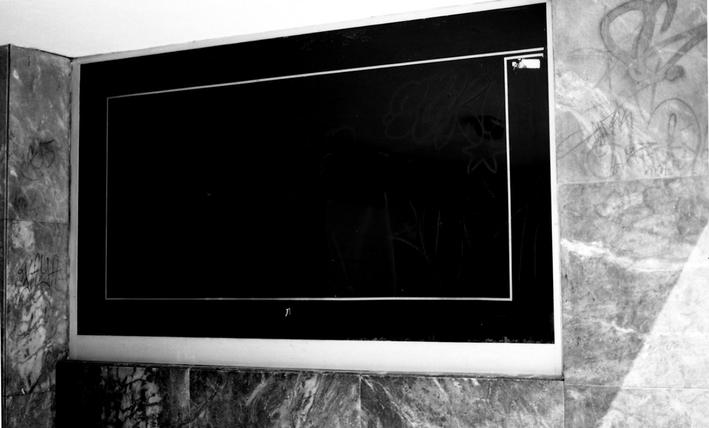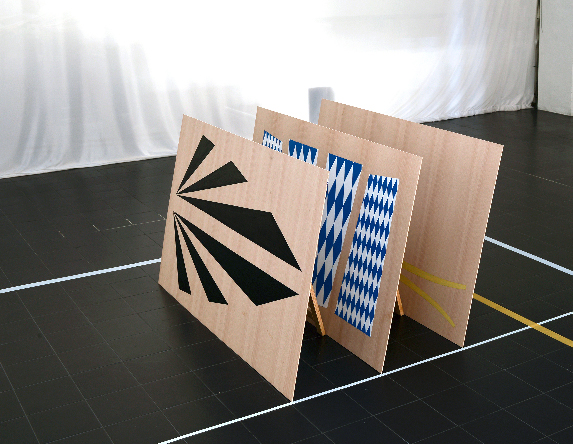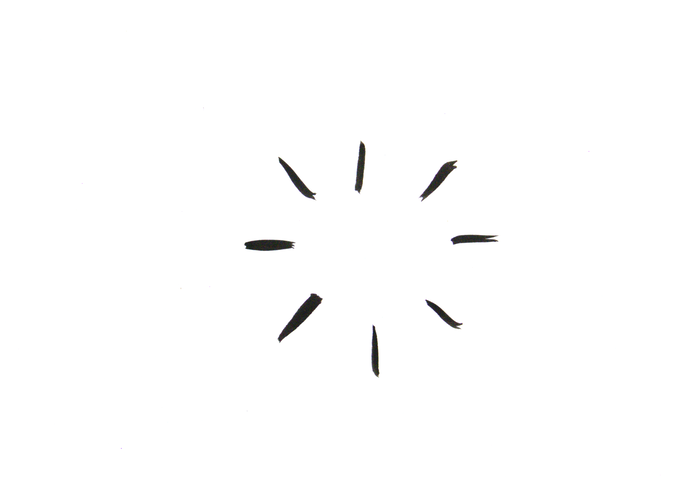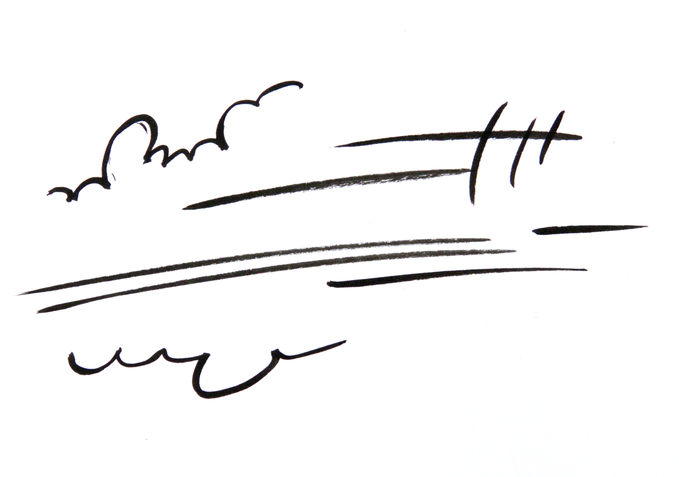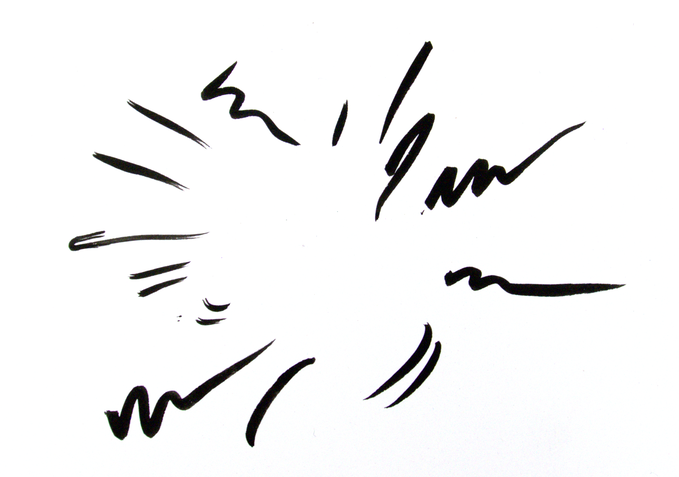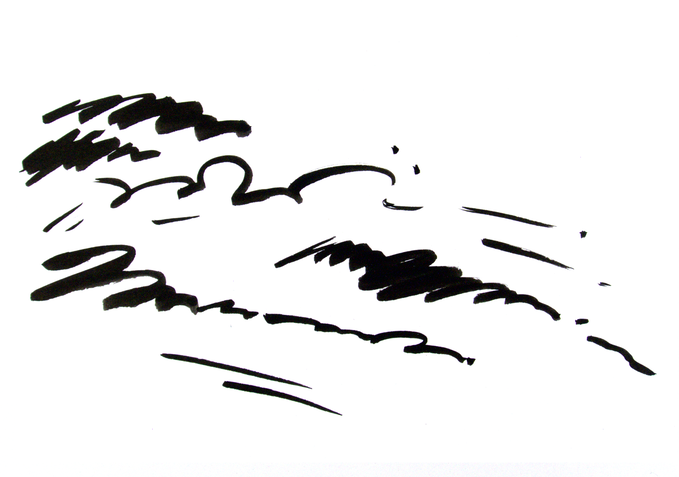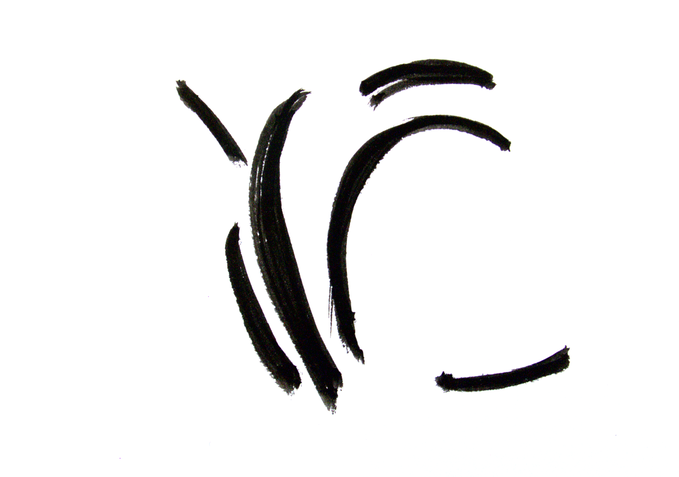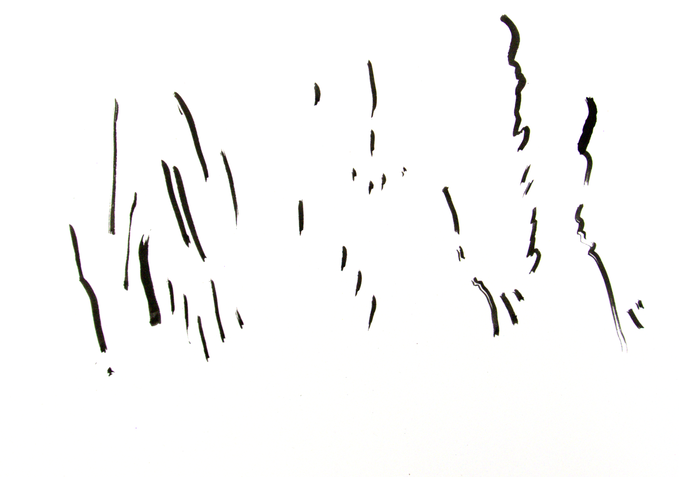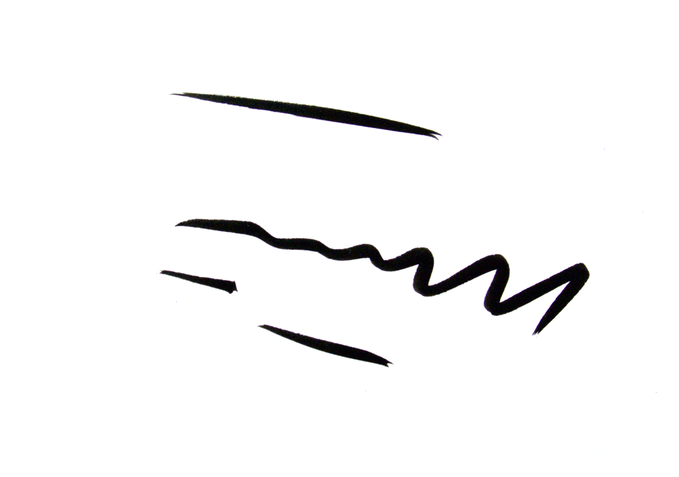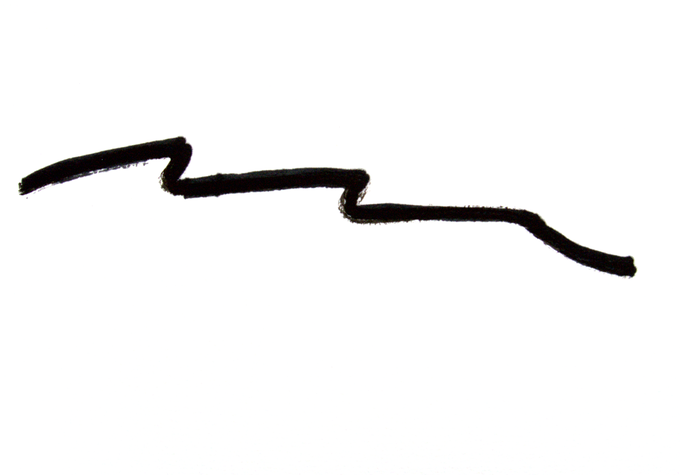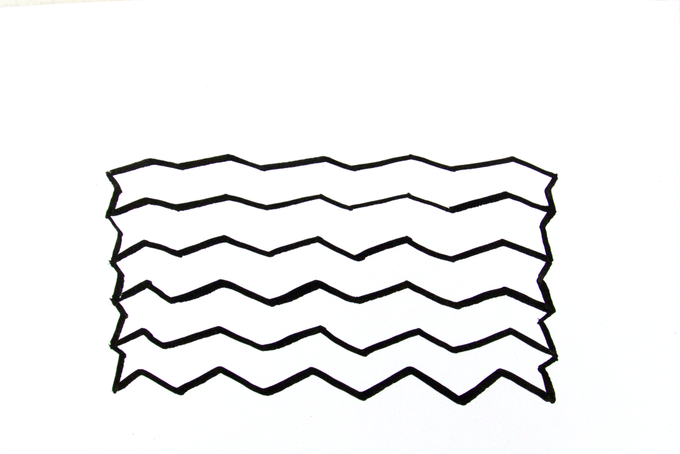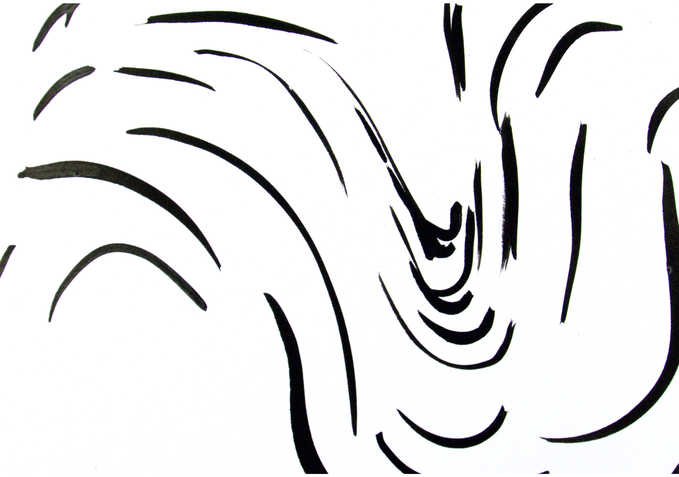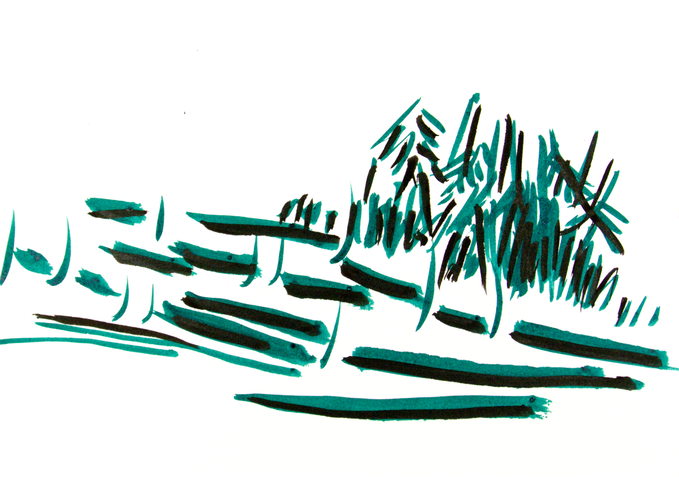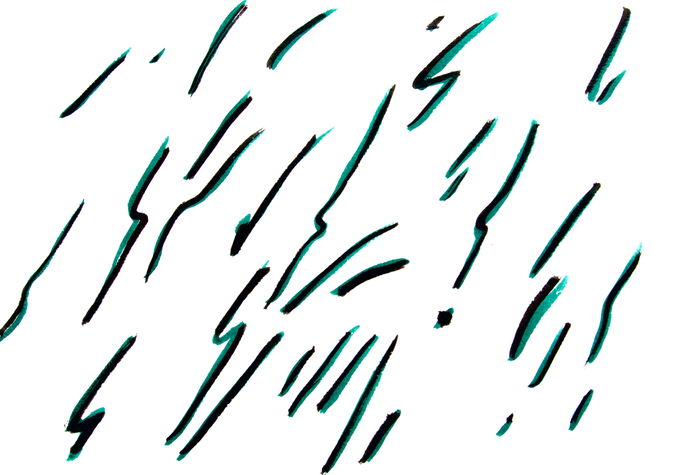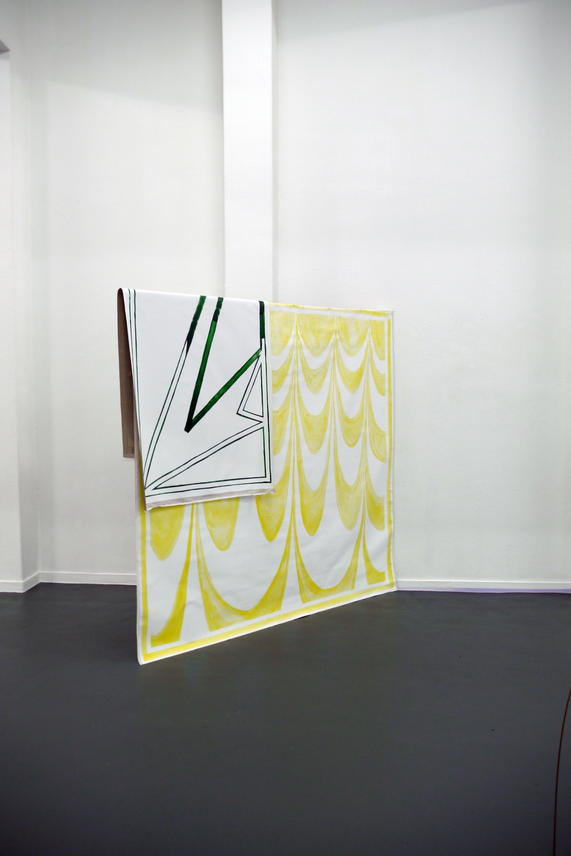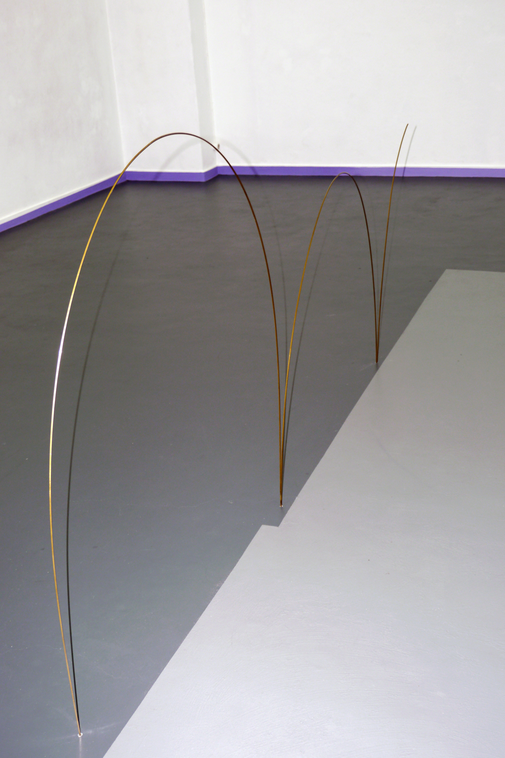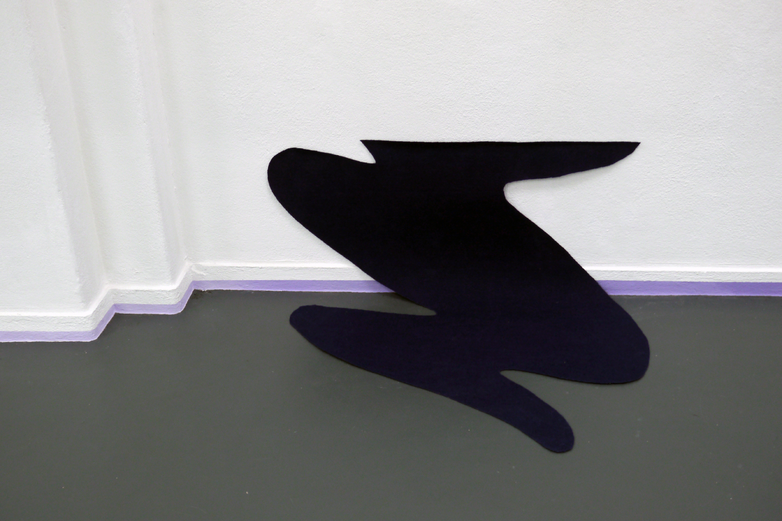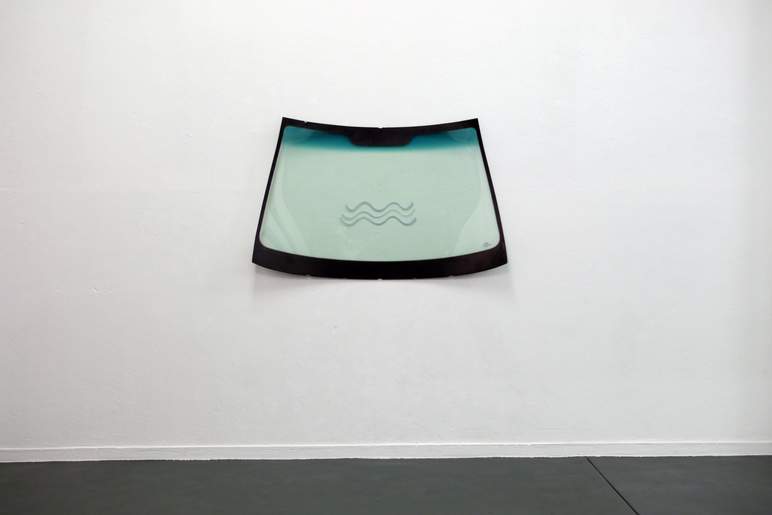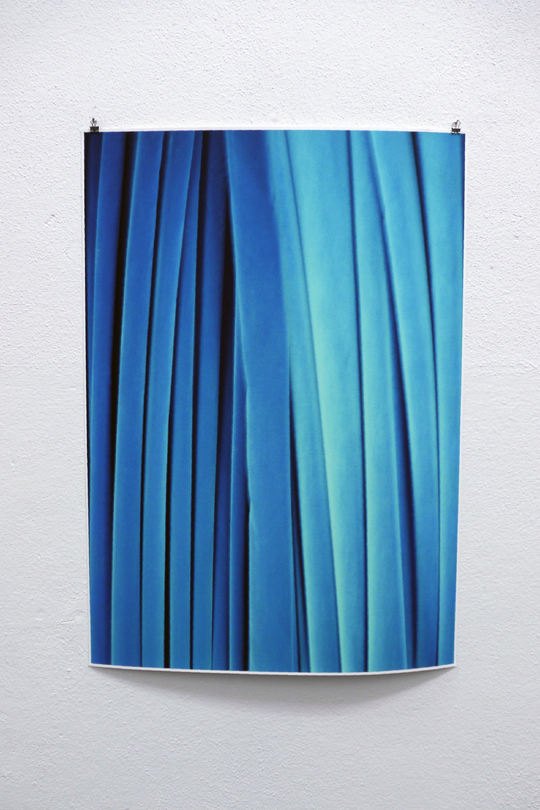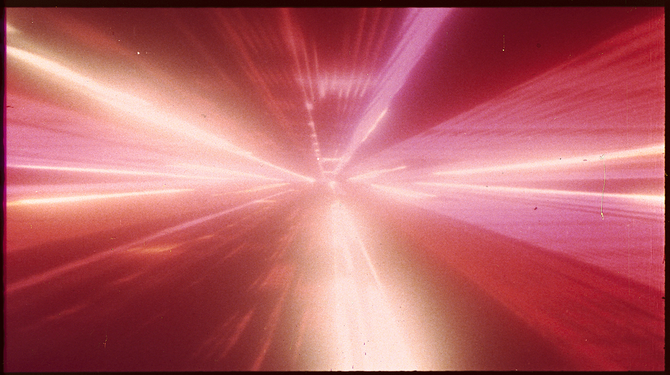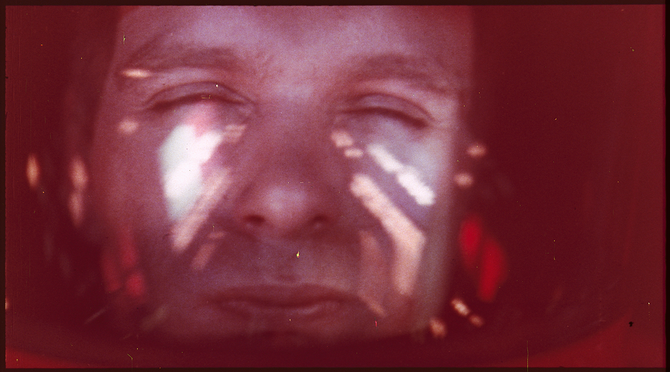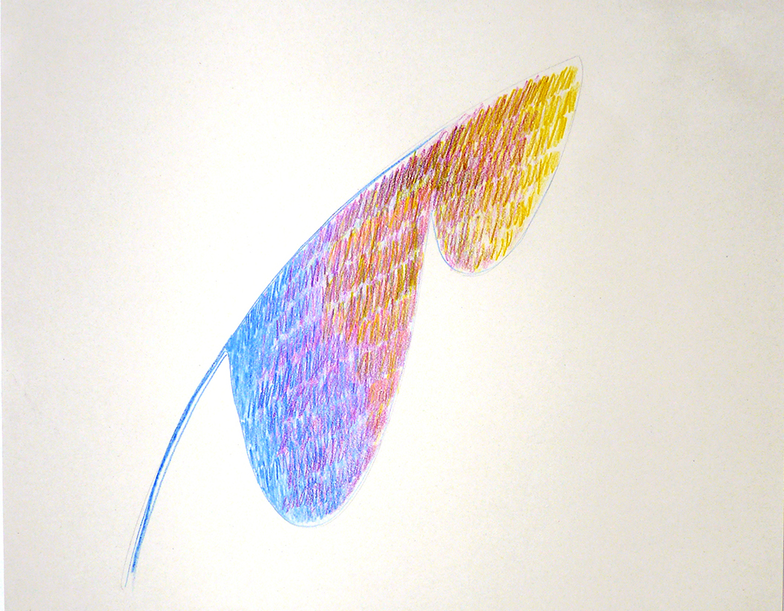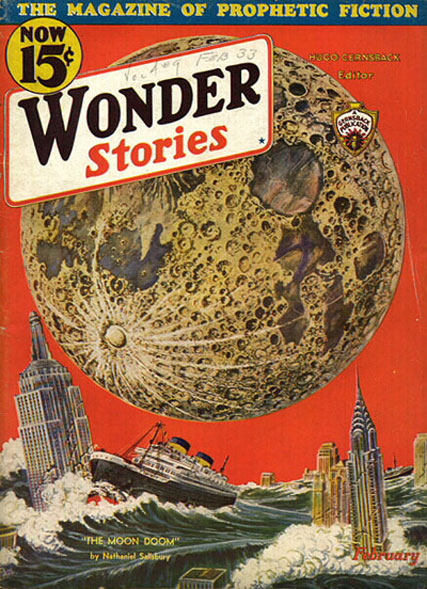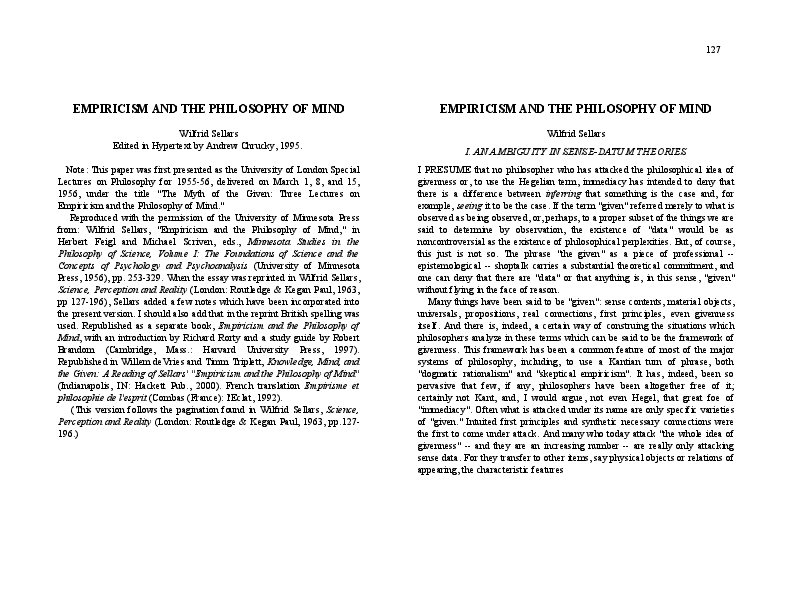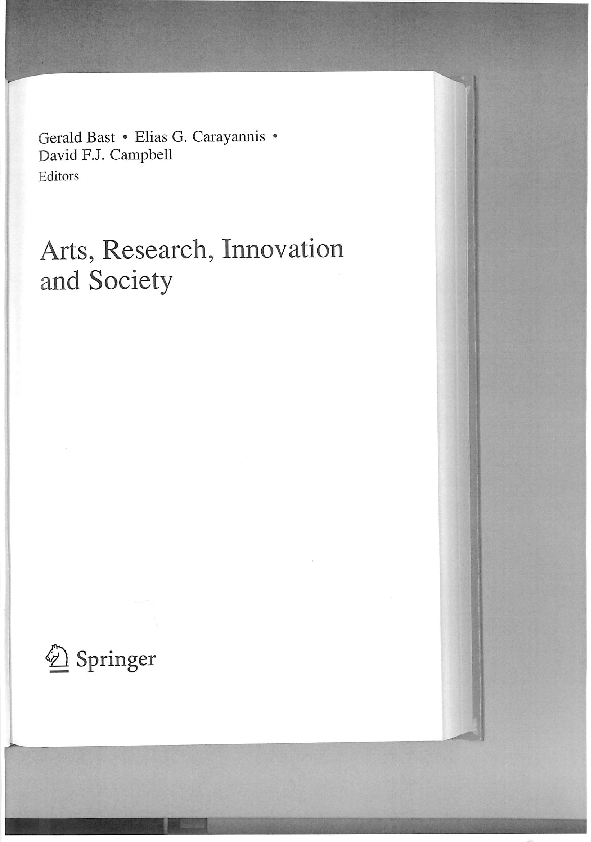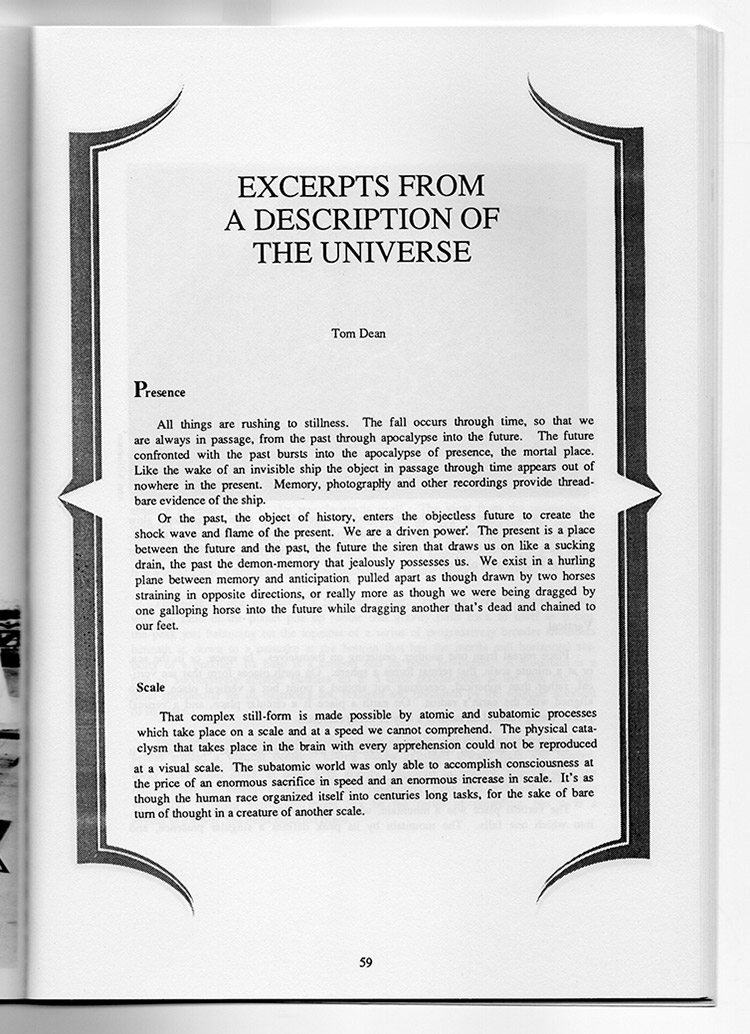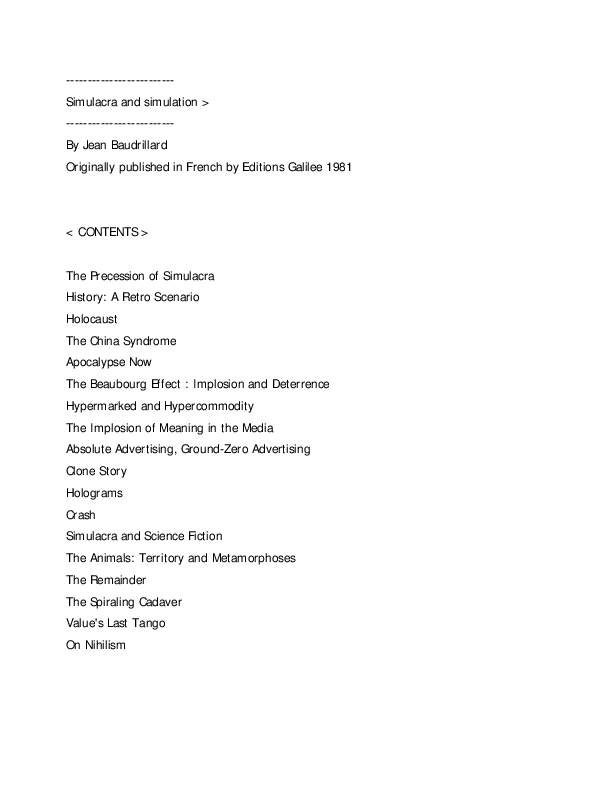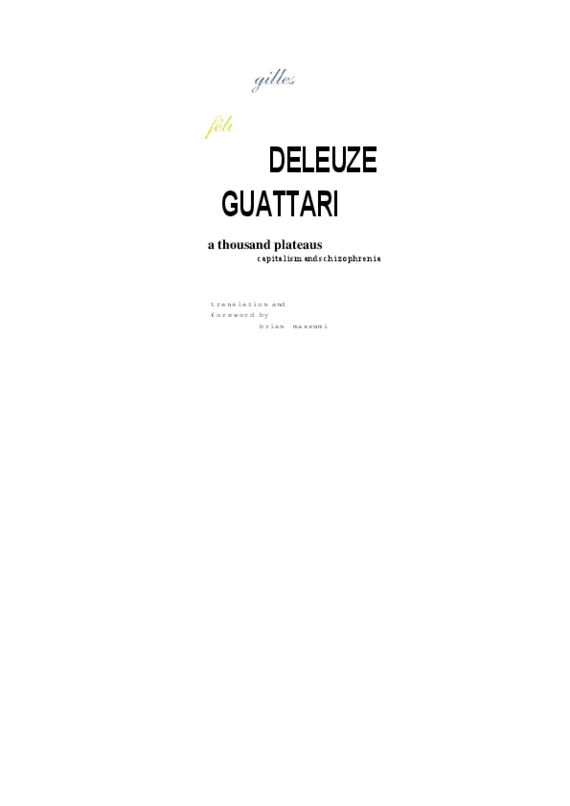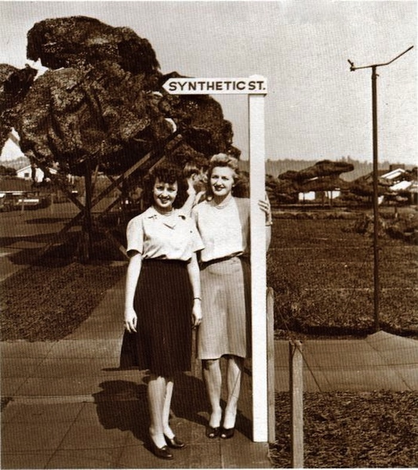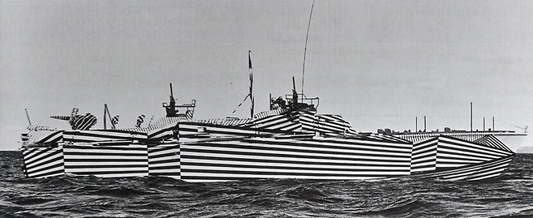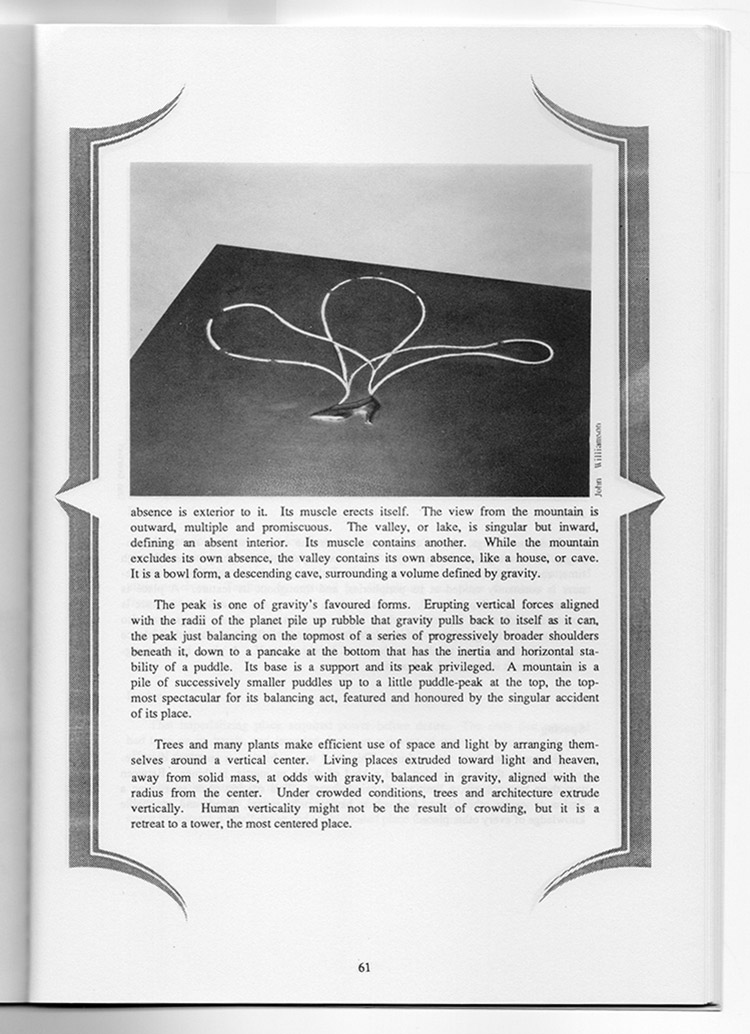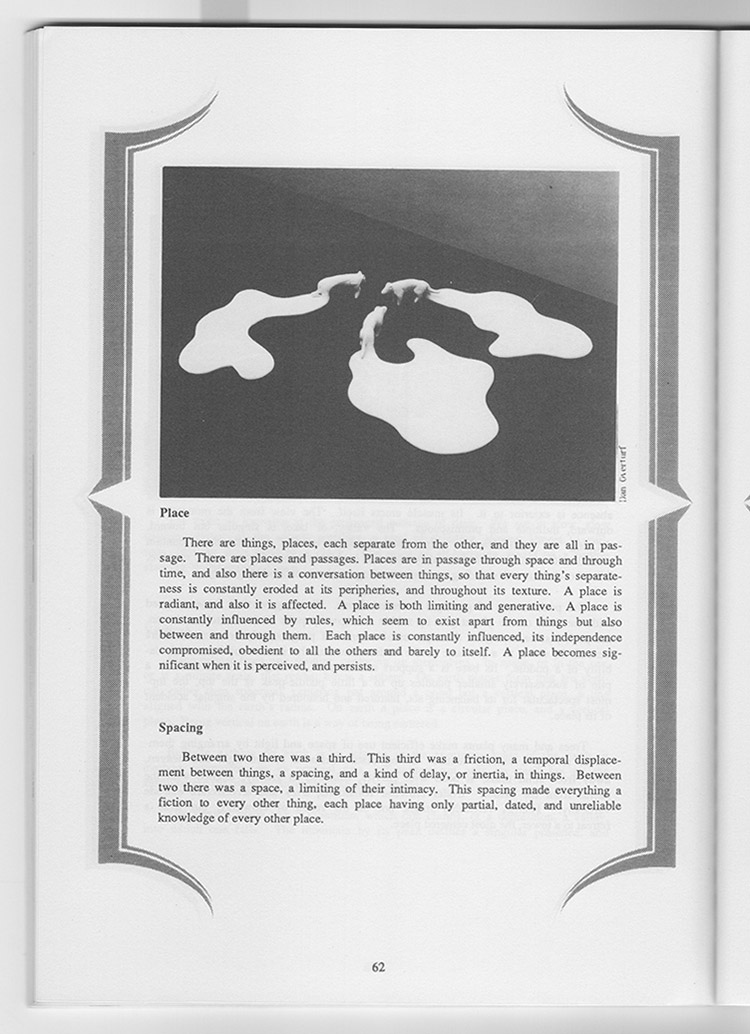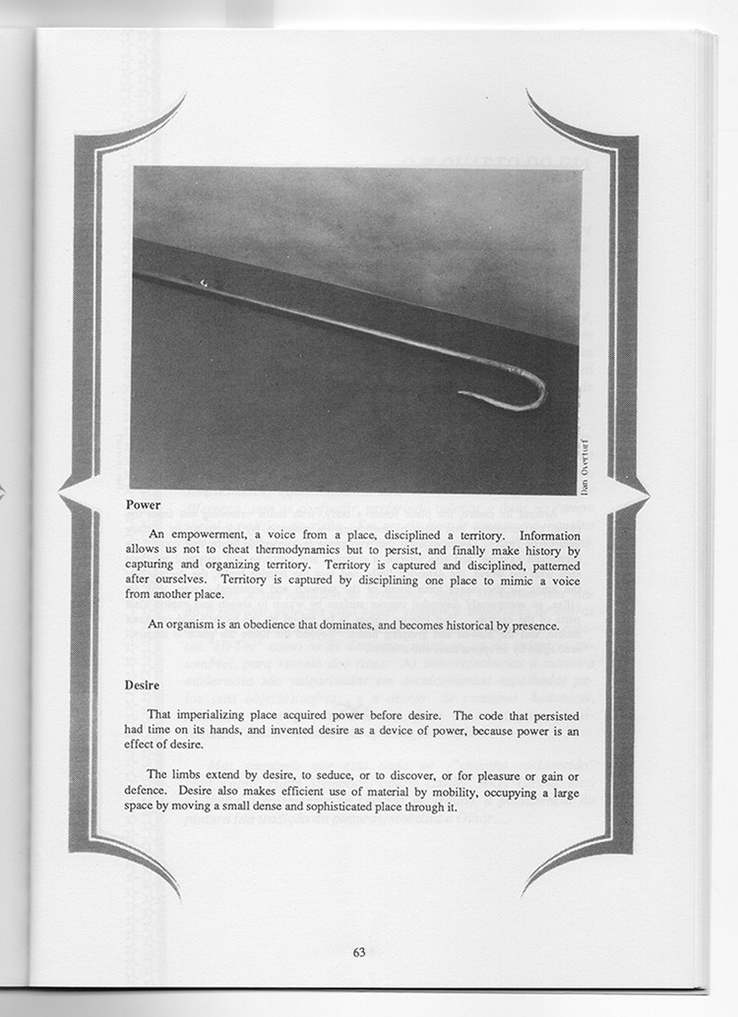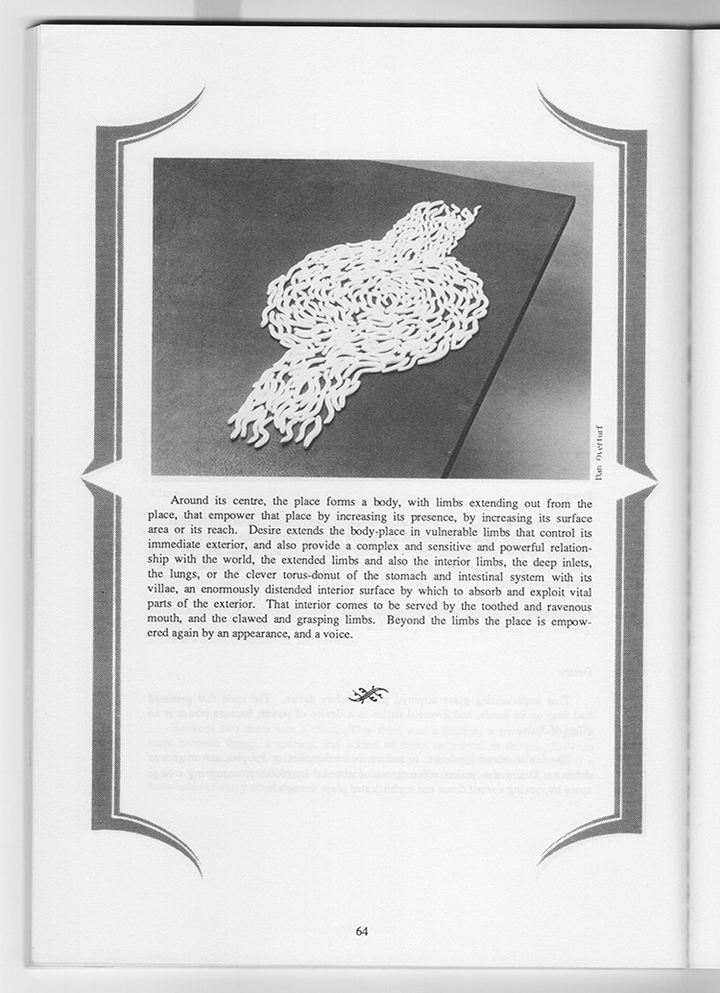Speed is, as said before, strongly connected with inertia as both provide en embodied learning process of the environment. If one moves very fast it may turn invisible to the static observer... It will be perceived as a passage.
Notice that I am still talking about knowledge...
To know something from a glimpse, leads to desire... That's probably the reason why it is culturally traditional to make a wish when a shooting star has been seen. The event is not that important, to barely see it leads to more expectation and consequently to a closer approach. Desire is related to something not totally obtained, barely seen or barely known. Desire is therefore related with speed and that blurry perception of a star tail.
Speed has a strong connection with the notion of future... Technology advancements tend to develop faster results. It gives a notion of benefit, in opposition with inertia. However, I claim that the resting position. The one that knows how to rest even in motion is probably the most profitable, ideally converging in a vertical and horizontal knowledge at once.
Visual research takes its form mostly in the studies of visual perception and it should not be understood only by the sense of vision, it must be seen as a complete process of recognition - throughout the immediacy of our senses and feelings - of every lights and shadows, forms and scales, similarities and distances, conveyed by our assumption of reality. Therefore, it is also a mental construction, let’s say a narrative of the image...
Many theorists and researchers are developing strategies to better define the role of artistic research in pace with the times.
Giaco Schiesser, supervisor of this PhD, has written relevant articles about this subject, defending a strong combination between content and form, explaining that artistic research is a platform of new theoretical knowledge, that leads to new aesthetics.
Shiesser refers to the term arte-fact, adopted from Hans-Jörg Rheinberger's thesis of “Epistemischen Widerborstigkeiten” (epistemic deep going contradictions), as a possible form of artistic researches.
To produce new knowledge, one must incurse into the unknown. To do that as a method is a learning process and peraphs better defined by areas that must deal with the unknown with an almost subversive way.
Observation is many times better persued if the observer is not recognizable, i.e. invisible to the others, to not interfere with its own presence, the observable event.
The same is applied if the observable matter is somehow unknown... If there is a chance that something is happen but one can't see it, having to search for it by other means of perception, resulting into a new possible knowledge. For example, premonition is a way of approaching, a valid knowledge on the unknown.
The search for the unknown, as in the case of pristine landscapes or distant territories and on the surveillance of veiled and unexpected subjects, leads observation to an experimental practice, when the observer must manage the information without precedents. As an experience, it is also an embodied knowledge, mostly if it gathers factors as time, scale and distance. For these reasons, my research focus on the observations of open fields, more specifically, smooth fields - the ones that can't be measured - I would even say, the liquid matters.
The most advanced techniques on territory reconaissance and visual disruption, are for sure, developed by military. More questions arise: what are the most effective techniques to search for the unknown? Could this knowledge benefit artistic researchers to develop their own strategies?
Starting from the basic notion of visual perception and camouflage and from the understanding of its effects in animal appearance, one of the first crucial names to mention is Abbott Handerson Thayer, an artist who made important experiments about the animal coloration and introduced the idea of disruptive camouflage or, as he called, the countershading. He also recognized its potential in the use of military tasks and proposed its use to the British army during World War I, which was applied in uniforms and coatings.
Thayer developed compositional devices based on his own investigations and others similar to his own, such as the work of the British zoologist Hugh B. Cott, who also brought the term coincident disruption, referring to the occurrence of blending and disruption in nature. Those compositional devices and theoretical demonstrations about appearance, the processes of embedding figures in their background and the combination of these techniques with displacement, helped to develop Razzle-dazzle patterns, used in war ships and aircrafts.
Despiste the notorious graphic design of those camouflage techniques, the aimed resut was to disruspt sight, with the combination of movement, making it difficult for others to define the outer lines of ships and aircrafts.
It is pertinent to reflect about the fact that in order to become invisible, militaries over-lapped visibility, subverting their aim only by disturbing it. One should remember, that perception is processed in motion, and always results in glimpses and never an integral value, which one must be prepaired to assimilate.
Nevertheless, motion is a paradox...
THE ARROW PARADOX
At each moment, we are at the edge of a arrow paradox, as described by the philosopher Zeno of Elea, ca. 490–430 BC.
Starting logically with the premise that nothing can be in two places at once, he reasoned that an arrow is only in one location during any given instant of its flight.
In fact one can hide by the means of immobility - inertia, the same way it is possible to hide by the means of velocity - speed. The aim is to rehinact the background in order to embed in it. It is the processes of knowing the background as much as one can become part of it. I would say that's the exponential of an embodied knowledge.
Most of military disrupting techniques are based on fakery. It is by simulating something as if it is real, by providing a credible scenary, by combining material's properties with cultural, visual and theoretical references, that the potential of fiction as true knowledge emerges. To do so, is in fact to play with old vs new knowledge, displacing old aesthetics into new contexts.
Also in Arts, the artificial and the counterfeit have always been used, once it is part of representitive techniques. To magnify replicas, representing by representations, is to reflect on the properties of lightness and hollowness of those materials... Properties that one can easily find in styrofoam, inflatables, PVCs, floating floors... Mostly are weak materials that represent solid materials. I am personally very interested in perceiving what resides from the artificial sphere and turn into physical, so I've done several artistic works that invite to reflect on these matters.
WAITING
For a better observation of the unknown, one has to deal, as seen, with perception and deception, either by inertia or speed. The knowledge of a background may result in its representation and it results as an embodied knowlege and therefore, as an affection. An affection effect resulting from waiting for an event to happen, to predict it or to fictionate, almost as a mythification of reality than by its approach is actually desmythified.
I decided to travel (in motion) as an expedition to a remote place: the Pharoe Islands. The day I arrived was the summer solstice, but I waited for the night to fall...
From that experience, I started a series of work where the non-event was the aim. To expect for an event that never happens. To know it only from premonition... How to not know it... How to know an unknown.
2 images. Taken around 12.00 am on June 21, 2016, in Miðvágur, Faroe Islands. Summer Solstice.
The first image is an external shot. Drawing on housing. The basic representation of a human figure, flanked by obliquely clumsy spelling – SÓL – which together and despite the accent, still evoke, by simplistic train of thought, the effigy of Re in an amusing frontal angle. In a corner, anything can happen.
The second image is an inside shot. It's a room of the military museum, located right across from the housing of the first image, curiously open but vacant. The museum houses a modest photographic archive reporting the British invasion of the Islands during World War II. This military step served, without significant impact, as stratagem of prevention, observation and concealment. The objects' arrangement is memorial: awaiting the Armistice.
Between these two places, the disturbing absence of night is announced. An imminent violence causing weary animals to fall over: one can see manes and heaped hooves.
I gradually suspect the impossibility of any human being grasping a form without sharpening its vertices. We change it into an event or, at least, a seamless, semi-open enclosure.
I proceed lifting the stones in the avowed expectation of finding you again, reinstating love. Watching the minutia of your gestures putting the needle over the vinyl. Well played industrial music – steel and water. Same elements on the northern harbours, materials for prospection.
Fish aren't fished in these islands, birds are, still young and awkward, throwing themselves in pathetic bravery, soon collapsing into the sea where they inadvertently float to death. Divine punishment!
In this renewed waiting for an event lies the opportunity for the Feroese, without better income, to lower their boats and collect the still warm birds in their nets for the family repast.
The premonition is confirmed: beneath the forcefulness, the sub-repticious. That cold, green face, signalling the place of the inert beings. Fetid creatures sustaining the weight of flesh, sacrificing sky for earth, night for day.
Fish aren't fished in these islands, birds are. Animals fall over, not the night.
Green ray is a rare optical phenomena that can be observed in the last or first sun rays, in particular weather conditions, on a distant horizon. The curvature and diffraction of light spectrum allows a clear perception of the green tones.
According to a Scottish legend, anyone who has seen this phenomena, obtain emotional enlightenment. This narrative has acquired many different shapes, as in the works of Jules Verne and Eric Rohmer, in which is translated into love stories.
Yet, most scientific reports mention long periods of waiting and attentive observation in order to witness the green ray, with the exception of the Portuguese navigator Gago Coutinho, who reported having been able to observe it repeatedly in the light of a distant lighthouse, inducing its demystification.
To tell apart through absences and other similar exercises allows for a placid abandonment of contention. Still, the means remain – materials we deem to recognise and stubbornly classify. Abraham’s psychoanalysis refers to this as anasemic tools: an allusion to the unknowable by means of the unknown[1]. I'd rather ascribe them the function of purview. During a visual approach, we collide with an image, rebatting its scale and distance and the successive variations thereof. The magical act also happens in that strain. The black cloth serves as absorbent and causes absences and rabbit ears and bare hands appear, before shape itself does.
To wait for a natural, lagging and erratic event, may be another method for purview. In this state of tedious prostration we fail to be precise, neglecting our tasks, and unintentionally evoke the anti-metaphor, sleep and laziness. One could say, perhaps, we all suffer from the same malaise…
- ^ Nicolas Abraham and Maria Torok, The Shell and the Kernel. Chicago: The University Press of Chicago, 1994, p. 23.
In Empiricism and the Philosophy of Mind, Wilfrid Sellars criticizes the notion that perceptions of sense-data give immediate knowledge, oposing (but not rejecting entirely) to the empiricists of his time, like the Logical Positivists, who were trying to base all knowledge on what they called protocol sentences, observation reports like "Red, here, now." These provided the mortat and thus justifying all aceptions of knoweldge. But this, Sellars pointed out, conflates the scientific description of the situation with the phenomenological experience of it. He called this the "Myth of the Given."
Sellar's criticism is similar to Immanuel Kant's idea that "intuitions/perceptions without concepts are blind" (Anschaungen ohne Begriffe sind blind). Sellars is a pragmatist who thinks that no particular perception, or for that matter, no particular concept alone can produce a general truth and foundational knowledge. Instead, all the particular matters of observational fact must be considered together with all the conceptual theories to form a consistent and coherent whole. He imposes a dependence of perceptually-based knowledge (integrating empiricism) on an overall world view.
The idea that observation "strictly and properly so-called" is constituted by certain self-authenticating nonverbal episodes, the authority of which is transmitted to verbal and quasi-verbal performances when these performances are made "in conformity with the semantical rules of the language," is, of course, the heart of the Myth of the Given. For the given, in epistemological tradition, is what is taken by these self-authenticating episodes. These 'takings' are, so to speak, the unmoved movers of empirical knowledge, the 'knowings in presence' which are presupposed by all other knowledge, both the knowledge of general truths and the knowledge 'in absence' of other particular matters of fact. Such is the framework in which traditional empiricism makes its characteristic claim that the perceptually given is the foundation of empirical knowledge.(Empiricism and the Philosophy of Mind, p. 77)
The desmystification is present in my own artistic works, in which I tend to add a sarcastic or humouristic tension to my own "observational reports".
That's the reason why I refere often to the non-event, the prelude more than the narrative or the tail more than the body, but even the tail is only interesting because it is pre-conceived that a tail is part of an entire body.
It is however important to be aware that the conditions to form a new knowledge must integrate narration and fiction in order to be processed by the human mind.
I raise other questions on this subject... In this assumption of a new world (in analogy to a new knowledge/aesthetic), how scientists (the justified report) regard the future? As positivists or negativists? How do they relate with known unknowns?
I asked these questions directly to not only militaries, but also astronomers, as long-range observers of smooth fields but mostly as the best connaisseurs of a far future...
Interview to the researcher in astronomy and astrophysics at the Australian National University, Isabel da Cunha
L. - Maybe I'd like you to start by introducing yourself, exposing your professional experience, and then starting by answering the following questions from a perspective that may be intrinsic and personal:
E. - Okay. So, I'm currently a researcher in astronomy and astrophysics at the Australian National University in Canberra. I took the Applied Physics / Mathematics course at the Faculty of Sciences of the University of Porto, finished in 2005. Later, I went to France to take my PhD at the Institut d'Astrophysique de Paris, which I completed in 2008 in the area of Extragalactic Astronomy is the area that studies how the galaxies in the Universe have formed and evolve. Afterwards, I did several post-docs, that is, forward contracts in which I worked on research. I spent two years at the University of Crete in Greece, four years at the Max Planck Institute for Astronomy in Heidelberg, Germany, a year and a half at Swinburne University in Melbourne, and since May 2016 I am a Future Fellow at ANU or I am leading my Own research group. You can see my CV etc here: http://www.mso.anu.edu.au/~edacunha/
My doctorate, and my specialty until today, and to develop models that allow us to use the light we see from distant galaxies at various wavelengths (ultraviolet, visible, infrared, radio, etc.) to measure real physical quantities. For example, measure when 'stars' weigh in the galaxy (star mass), or how many new stars the galaxy is forming. For reference, our galaxy, Milky Way, weighs 30 billion times the mass of the Sun, and forms about the equivalent of the mass of 1 Sun each year. Measuring these quantities, and knowing how they range from galaxy to galaxy, and how they vary over the life of a galaxy, it is important to realize how galaxies form.
L. - Astronomy is an area that, like any science, develops from the discovery or reformulation of data considered to be true. However, what sets it apart from other sciences is that it must rely on sufficiently open and peripheral methods, since research is devoted to distant, changing and constantly moving (spatial and temporal) objects, sometimes difficult to grasp and Therefore, with equally abstract and soluble representations of reality ...
It is also a practice of observation strongly linked to the cultural history of Man. Rituals and religions had their origin in the observation of the celestial sphere, associating bad omens to the delayed passage of comets or good omens to the fleeting passage of meteors. The passage, as indiscernible factor is thus of great influence for the premonition of a possible future. You agree? Is not the passage itself a convergence / continuity of different temporal spaces? Is it not in this sense, the analysis of data flow, the best way to produce new knowledge?
E. - I agree to a certain extent. One thing we must realize, at least in the area of extragalactic cosmology and astronomy, that is, in the Universe on its greatest scale, the temporal scales are so long (from millions to billions of years), that the objects we studied, ie Galaxies, do not change anything at all in our observations over a human life or until centuries. To illustrate this includes an attached chart called "cosmic calendar" that was first thought by the Sagan Car.
My relationship with time as an extragalactic astronomer is perhaps difficult to explain in a few words. As you know the speed of light is finite, so when we observe a distant galaxy, we are seeing it as it was when the light left the galaxy to come to us. If the galaxy is 1000 light years, we are seeing it as it was 1000 years ago, and so on. And for this particular galaxy, that will be the only point in your "life" where I can observe it because to see that particular galaxy evolve we would have to see it again at least 50-100 million years from now ( The galaxies do not change much at the smaller time scales), and I will not be able to observe it at that time. So, in order to try to understand how this galaxy was in the distant past, or what will become in the future, I would like to observe other galaxies that are similar in a time before and after, that is, I will observe galaxies in the even more distant Universe To see the farthest past, and in the nearest Universe to see the latest past ... does it make sense?
L. - To what extent have popular or mythological beliefs provided knowledge for the development of astronomy as a concrete science, and how does the scientific and spiritual approach converge or refute?
E. - I think that before the "scientific revolution" of the sixteenth century (https://pt.wikipedia.org/wiki/Revolution_Century) in which the scientific method based on experimentation and observations emerged, with scientists such as Newton, Galileo etc. , There was really much overlap between "science" and religion / myth. Astronomy in ancient Greece was already quite developed and had many elements correct thanks to Hipparchus, Archimedes, Aristoteles etc, but there was still plenty of Astrology to mix. And in the Middle Ages the church I think had a lot to do with mixing real science with belief and superstition. But from the sixteenth century all this is over. I think that in modern science there is no room for beliefs that are not disproved by experiences / observations. It does not mean that scientists are always 100% objective of course! We are human beings so we can not be 100% objective, but we try in our work to always obey the scientific method.
This also means that I think there are areas of life that science can not and should not try to answer. For example, people often ask me if science can prove that God exists or not. I think that this question can not be tested experimentally, so it is out of the field in science, and it is part of the most human spheres of philosophy, religion, etc. (Not all scientists agree with me at this point).
L. - What are the methods, instruments or techniques of observation that nowadays and in the area of astronomy best suit the production of new knowledge?
E. - Nowadays, astronomy always takes great leaps every time you build a larger telescope that can see more distant objects, or nearer objects with greater clarity, or telescopes at different wavelengths, for example in the infrared.
L. - How is terminology managed, since new terms are constantly formulated? What is the process of validating a new lexicon in a scientific community?
E. - It depends. There are terminologies that come up in scientific articles and are quickly adapted, sometimes because they are really perfect for describing a new phenomenon / observation / problem, sometimes simply because fashion picks up. But there are areas that are managed by the International Astronomical Union. For example, the UIA manages the official names of planets, exoplanets, nearby stars, and galaxies.
When I asked Sir Martin Rees (Baron Rees of Ludlow, OM, FRS, FREng, FMedSci[2] is a British cosmologist and astrophysicist. He has been Astronomer Royal since 1995[3][4] and was Master of Trinity College, Cambridge from 2004 to 2012 and President of the Royal Society between 2005 and 2010) to reflect on this, he answered with a concern he has about the limits of intelectualism...
The end of science?
The limits of human minds.
We aspire to understand our cosmic habitat, even though we could stand little more chance than a fish. Will our computers do any better? Super-intelligent computers may well solve questions that are currently beyond us.
Some branches of science could one day come to a halt. But this may happen because we bump up against limits of what our brains can understand, rather than because the subject is exhausted. Physicists may never understand the bedrock nature of space and time because the mathematics is just too hard; but I think our efforts to understand very complex systems -- above all, our own brains -- will be the first to hit such limits. Perhaps complex aggregates of atoms, whether brains or machines, can never understand everything about themselves.
Computers with human-level capabilities will accelerate science, even though they won't think like we do. IBM's chess-playing computer Deep Blue didn't evolve its strategy like a human player: it exploited its computational speed to explore millions of alternative series of moves and responses before deciding an optimum move. This 'brute force' approach overwhelmed a world champion; likewise, machines will make scientific discoveries that have eluded unaided human brains. For example, some substances are perfect conductors of electricity when cooled to very low temperatures ('superconductors'). There is a continuing quest to find the 'recipe' for a superconductor that works at ordinary room temperatures (that is nearly 300 degrees above absolute zero; the highest superconducting temperature achieved so far is 120 degrees). This quest involves a lot of 'trial and error', because nobody understands exactly what makes the electrical resistance disappear more readily in some materials than in others.
Suppose that a machine came up with such a recipe. It might have succeeded in the same way that Deep Blue won its chess games against Kasparov --- by testing out millions of possibilities rather than by having a theory or strategy. But it would have achieved something that would get a scientist a Nobel prize. Moreover, its discovery would herald a technical breakthrough that could, among other things, lead to still more powerful computers -- an example of the runaway acceleration in technology, worrying to Bill Joy and other futurists, that could be unstoppable when computers can augment or even supplant human brains.
Simulations, using ever more powerful computers, will help scientists to understand processes that we neither study in our laboratories nor observe directly. I can already create a 'virtual universe' in a computer, and do 'experiments' on it -- calculating how stars form and die, how our Moon formed in a crash between the young Earth and another planet, and so forth.
It’s important that everyone realizes how much scientists still don’t know – how patchy our current understanding is. And that commonplace phenomena are often the most perplexing. It may seem odd that astronomers can speak confidently about galaxies billions of lightyears away, whereas the gurus who pronounce on everyday matters like diet and childcare, change their advice from year to year. But it isn’t really so odd. What makes things hard to understand isn’t how big they are, it’s how complex they are. It’s harder to forecast the weather than to predict eclipses. An insect, with its layer upon layer of intricate structure, is far more complex than a star. Human beings and their interactions are far more complex still.
The pace of scientific progress is exhilarating. In my own subject, for example, fifty years ago we didn’t know if there was a big bang. Now, we can draw quite precise inferences back to a nanosecond. And we seriously debate what happened when our universe was a trillionth of a trillionth of a trillionth of a second old and whether ‘our’ big bang was the only one. After fifty more years, concepts that now seem flaky speculation may well have been firmed up. And the same trend is clear across the whole of science.
Overall, however, scientific knowledge and capability is actually surprisingly 'patchy'. Many everyday things still baffle even the experts. In contrast, some of the best-understood phenomena are far away in the cosmos. Back in the 17th century, Newton could describe the 'clockwork of the heavens'; eclipses could be both understood and predicted. But few other events are so predictable. For instance, although the atmosphere is understood, it's still hard to forecast, even a day before, whether those who go to view an eclipse will encounter clouds or clear skies; in the far more complex fields of sociology and economics, all trends are notoriously unpredictable. And some familiar matters that interest us all -- diet and child care for instance -- are so poorly understood that 'expert' advice changes from year to year.
We can expect huge further advances. Nonetheless – and I’m perhaps sticking my neck out here – I think we should recognized that at some stage we might ‘hit the buffers’ because our brains don’t have enough conceptual grasp. Our minds evolved to cope with the life of our remote ancestors on the African savannah and haven’t changed much since. It’s surprising that we’ve got so far in comprehending the counterintuitive microworld of atoms, and the vastness of the cosmos. But just as a monkey can’t grasp quantum theory (and indeed isn’t aware of phenomena that stimulate the search for such a theory) there could be aspects of reality of which humans are not even aware.
So there are insights that will have to await some post-human intellect – and whether that is Earth-bound or alien, organic or silicon-based, is another great unknown.
The prime unfinished business of 21st century physics is a unified theory which reconciles Einstein’s general relativity (which describes gravitation and cosmic phenomena well) and the quantum theory which governs the behaviour of atoms and and subatomic world. The most widely studied attempt to link together the physics of the cosmos and of the microworld is string theory. This involves a space of 10 dimensions rather than 4, and is notorious for its extreme mathematical complexity. Perhaps a ‘final’ theory will transcend what human brains are capable of – and will have to await some post human species! (But even if this is true, it’s important that physicists themselves don’t take such a defeatist view; unless they retain the hope that they can solve the problem, they’ll lose motivation and will surely fail.
But fundamental physics may not be the most challenging science. What makes things hard to understand is how complicated they are, not how big they are. Planets move in accord with simple laws. We can understand stars; and atoms as well. But 99 percent of scientists study neither the cosmos nor the subatomic world. They are challenged by the complexities of our everyday world. Even simple substances like air and water behave in complex ways. Weather patterns are manifestations of the well-understood physics of air and water, but are too complicated to forecast accurately. But the biological realm poses the most formidable challenge.
Even the smallest insects embody intricate structures that render them far more mysterious than atoms or stars. When we grapple with the complexities on our human scale, a holistic approach proves more helpful than naive reductionism. What goes on in a computer depends on electrons moving in complicated circuits, but if we focus just on the electrons we miss the essence of what the computer is doing --the logic encoded in those circuits. Animal behaviour makes the most sense when understood in terms of goals and survival. We can predict, with confidence, that an albatross will return to its nesting place after wandering ten thousand kilometres or more. Such a prediction would be impossible -- not just in practice, but even in principle -- if we considered the albatross as an assemblage of electrons, protons and neutrons.
Nearly all scientists are ‘reductionists’, insofar as they assume that everything, however complicated, obeys the basic equations of physics. But that’s not how we understand them. Even a phenomenon as un-mysterious as the flow of water in pipes or rivers is studied in terms of ‘emergent’ concepts like viscosity, turbulence and so forth. Specialists in fluid mechanics treat the water as a continuum. They don’t care that it’s actually made up of H2O molecules. Even if we had a hypercomputer that could solve Schrodinger’s equations for the flow, atom by atom, the resultant simulation wouldn’t provide any insight into how waves break, or what makes a flow go turbulent. And new irreducible concepts are even more crucial to our understanding of really complicated phenomena -- for instance, migrating birds or human brains. Phenomena with different levels of complexity are understood in terms of different irreducible concepts – turbulence, survival, alertness, and so forth. The brain is an assemblage of cells; a painting is an assemblage of chemical pigment. But in both cases what’s important and interesting is the pattern and structure – the emergent complexity
So I think we should be open-minded about the possibility that some fundamental truths about nature could be too complex for unaided human brains to ever comprehend. Indeed, perhaps we'll never understand the mystery of these brains themselves -- how atoms can assemble into a 'grey matter' that can become aware of itself and ponder its origins. There may even be aspects of external physical reality that we are as yet unaware of.
The claim that there are limits to what human brains can understand has, incidentally been contested by David Deutsch, a distinguished theoretical physicist who pioneered key concepts of ‘quantum computing’. In his provocative and excellent book ‘The Beginning of Infinity’ he pointed out that any process is in principle computable. This is true. However, being able to compute something is not the same as having an insightful comprehension of it. Consider a slightly trivial example from geometry in two dimensions, where points are designated by two numbers, the distance along the x-axis and along the y-axis. Anyone who has studied geometry at school would recognize the equation for a circle. The famous ‘Mandelbrot set’ is described by a recipe that can be written down in a few lines. And its shape can be plotted by even a modest-powered computer. But no human can visualize this immensely complicated pattern, in the same sense that they can visualize a circle.
So there are insights that will have to await some post-human intellect – and whether that is Earth-bound or alien, organic or silicon-based, is another great unknown.
JAMIE McINTYRE: But if we are to believe things —
DONALD RUMSFELD: I could have said that the absence of evidence is not evidence of absence, or vice versa.
JAMIE McINTYRE: But we just want to know, are you aware of any evidence? Because that would increase our level of belief from faith to something that would be based on evidence.
DONALD RUMSFELD: Yeah, I am aware of a lot of evidence involving Iraq on a lot of subjects. And it is not for me to make public judgments about my assessment or others’ assessment of that evidence. I’m going to make that the last question.
The power of dogma versus evidence. We have been transported back to 1633. To Galileo Galilei standing before the Inquisition disputing the geocentric versus the heliocentric solar system. For the Inquisition, Galileo’s calculations conflict with dogma. But for Galileo, his calculations reveal the true nature of the universe — the true nature of reality. (The scene is memorialized in a painting by Joseph-Nicolas Robert-Fleury, Galileo Galilei Before Members of the Holy Office in the Vatican in 1633 — a painting of a painting with Raphael’s Disputation of the Holy Sacrament looming in the background.)
These 17th century debates remind us that if you have an unshakable belief in something, then no amount of evidence (or lack of evidence) can convince you otherwise. (There are always anti-rationalist objections to everything and anything. It is curious, however, to hear them in the 21st century rather than in the 17th.)
